What Are You Looking For?
What Are You Looking For?
Differences And Similarities Between Western And Eastern Sculpture
May 29, 2024Sculpture as a unique art form has a long historical tradition and brilliant achievements in both Western and Eastern civilizations. Through comparative analysis, we can find that Western and Eastern sculptures exhibit significant differences in spiritual connotation, artistic style, and creative concepts, while also sharing some common ground.
Beauty is the common pursuit of Western and Eastern sculpture, but they differ greatly in their spiritual connotations. One pursues the harmony and the bursting forth of the life force, while the other pursues the projection of a balanced patriarchal hierarchical system. Therefore, they exhibit considerable differences in their artistic expressions.
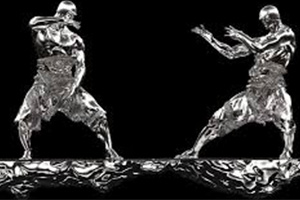
Differences between Western and Eastern Sculpture:
The China Art Sculpture often embodies the ethical pursuit of "virtue" and "benevolence", focusing on the inner character traits and spiritual qualities of the figures. This stems from the Chinese traditional culture's emphasis on "self-cultivation" and the notion of "cultivating oneself, regulating the family, governing the state, and bringing peace to the world." As a result, Chinese sculptural works typically do not strive for precise mimicry of the external form, but rather place greater emphasis on "capturing the spirit" and presenting the spiritual essence of the figures.
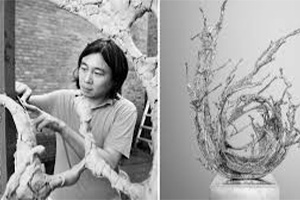
In contrast, Western sculpture more often reflects a pursuit of "truth" through scientific and intellectual means. Dating back to ancient Greek times, Western sculpture has taken the human body as its primary subject, dedicated to the meticulous depiction and realistic representation of the body's structure, proportions, and expressions. This orientation towards the sculpting of the physical form is partly rooted in Western culture's emphasis on human nature and humanistic values.
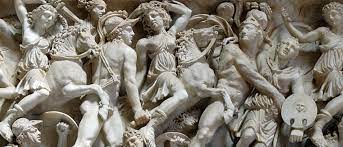
This divergence in internal pursuits has led to significant differences in the stylistic approaches of Chinese and Western sculpture. Chinese sculpture often "prioritizes the spirit over the form", focusing on the abstract representation of the figures' expressions and gestures to convey their inner qualities, while Western sculpture places greater emphasis on the realistic simulation and intricate depiction of the human physique.
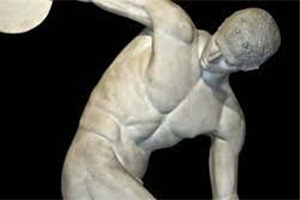
Differences in Sculptural Language
The divergence in spiritual connotations has also resulted in a striking contrast between Chinese and Western sculpture in their sculptural language.
In terms of physical form, Chinese sculpture often employs exaggerated and abstract techniques to highlight the essence and aura of the figures, focusing on the expression of inner beauty. In contrast, Western sculpture is more inclined towards pursuing the rigorous accuracy of the external form, seeking a naturalistic and realistic aesthetic.
In the treatment of space, Chinese sculptural works tend to emphasize the harmonious integration with the environment, striving for the fluid permeation of inner rhythms, while Western sculpture more often accentuates the independence and prominence of the individual forms, aiming to create a sense of power and tension.
In the selection of subject matter, Chinese sculpture primarily features images of deities, sages, and imperial figures of high status, reflecting the Chinese cultural values of "cultivating oneself, regulating the family, governing the state, and bringing peace to the world." Western sculpture, on the other hand, encompasses a wider range of themes, including mythology, history, and portraiture, reflecting a more diverse creative orientation.
In terms of materials, the Western sculptural tradition has traditionally favored the use of hard and durable materials such as marble, bronze, and stone, while Eastern sculpture has tended to embrace more perishable materials such as wood, bamboo, and jade.
In terms of materials, the Western sculptural tradition has traditionally favored the use of hard and durable materials such as marble, bronze, and stone, while Eastern sculpture has tended to embrace more perishable materials such as wood, bamboo, and jade.
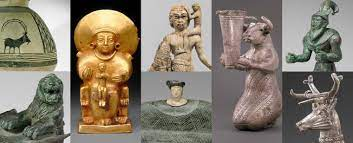
Similarities between Chinese and Western Sculpture
Although Chinese and Western sculpture exhibit differences in many aspects, the two traditions actually share a common pursuit of "beauty."
Firstly, the two great cultural traditions have a wide range of commonalities in religious subject matter. Whether it is the Buddhist statues in China or the deity sculptures in the West, both reflect a reverence and worship of sacred powers, seeking a sublime and transcendent aesthetic. This religious aesthetic pursuit is an important shared characteristic of Chinese and Western sculpture.
Secondly, in terms of creative techniques, both Chinese and Western sculpture strive to express their understanding and perception of the objective world through the profound depiction of the human body or natural forms. Whether it is the "realistic representation" in Chinese sculpture or the realist tradition in the West, both reflect a deep grasp of the laws of nature and human nature, which are then transformed into unique aesthetic forms.
Lastly, both Chinese and Western sculpture, to varying degrees, express a reverence and care for human nature. Whether it is the ethical sentiments of "benevolence" and "goodness" reflected in Chinese sculpture or the dignity of humanity displayed in Western sculpture, they both signify the shared value orientation of sculptural art in pursuing the "good life."
In summary, Chinese and Western sculptural art do exhibit significant differences in spiritual connotation, artistic style, and creative concepts, which originate from the fundamental differences in the two great cultural traditions in terms of values and aesthetic orientation. However, the two traditions also share many commonalities in their ultimate pursuit of "beauty," highlighting the shared aesthetic aspirations of human civilization. In the era of globalization, Chinese and Western sculpture are actively embracing new cultural fusion and innovative transformation, which will undoubtedly give rise to even more diverse and vibrant artistic achievements.
If you are interested in our products, please visit our website https://www.tiancaisculpture.com/ for more information.
We also offer custom sizes and colors based on your specifications. Please contact us for pricing: joey@tiancaisculpture.com
TEL/Whats app/Skype: +86 15302624559
Welcome to customize your drawings and create your own artistic beauty
Sculpture Supplier: Tiancai